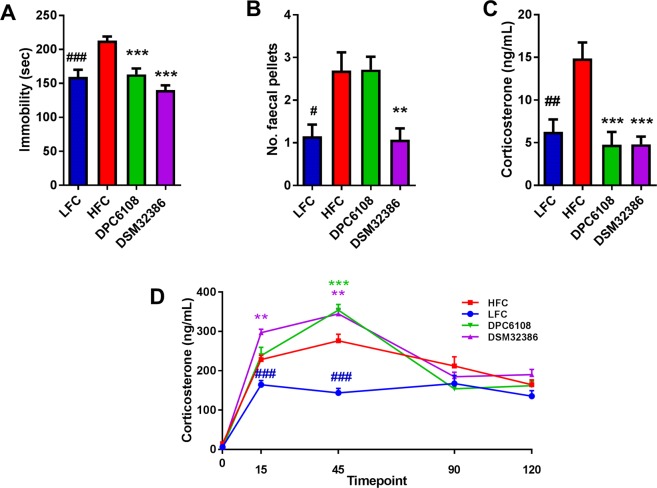Figure 6.
L. brevis improved symptoms of depression-like behaviour in the FST and resting corticosterone levels. The effect of HF-diet feeding and L. brevis intervention on depression-like behaviour and the HPA axis response to stress was assessed after 21 weeks of feeding and after 8 weeks of intervention. Despair behaviour was assessed thorough immobility time (A) by mice throughout the test and anxiety-like behaviour was assessed through the number of faecal pellets produced during the test (B). Plasma isolated at T = 0, just prior to the FST was used to measure corticosterone production (C) and subsequent plasma samples collected at T = 15, T = 45, T = 90 and T = 120 post-FST were used to calculate corticosterone as a measure of the HPA axis response to stress (D). Samples were collected from mice in LFC (n = 13), HFC (n = 12), DPC6108 (n = 11), DSM32386 (n = 14). All data was analysed using the appropriate unpaired student t-test (HFC vs LFC) and one-way analysis of variance (ANOVA). #p < 0.05 HFC vs LFC, ##p < 0.01 HFC vs LFC and ###p < 0.001 HFC vs LFC, **p < 0.01 treatment vs HFC and ***p < 0.001 treatment vs HFC. FST: forced swim test, HF: high fat, HFC: high fat control, HPA: hypothalamic pituitary adrenal, DPC6108: L. brevis DPC6108, DSM32386: L. brevis DSM32386, LFC: low fat control.

